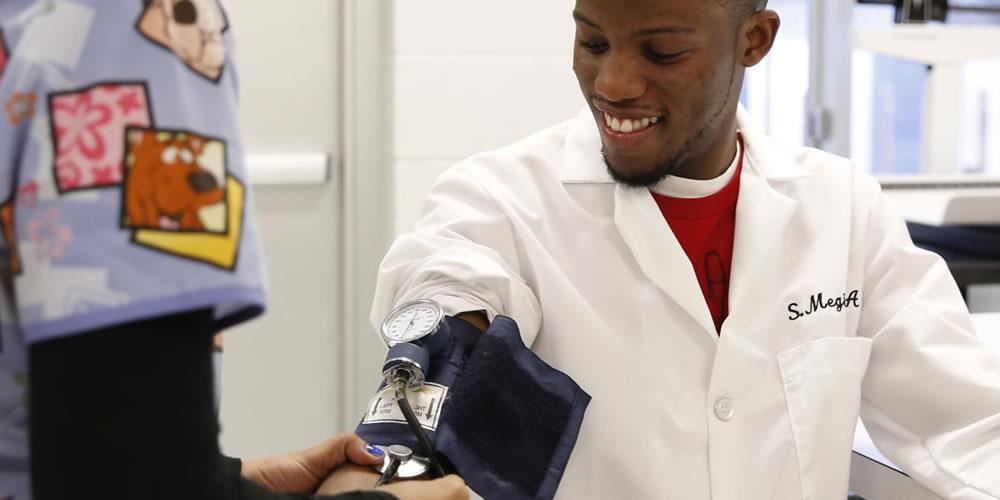As suggested by the name, Diagnostic Medical Sonographers, often known as ultrasound technicians, are responsible for performing diagnostic tasks linked to evaluating sonographic pictures. Sonographers are highly trained specialists who are adept at utilizing advanced ultrasound medical equipment and deciphering the images generated. When choosing the photos required and when interpreting the outcomes, they must exercise professional judgment. The Medical Assistant performs a number of administrative tasks as well as some restricted clinical tasks as instructed by doctors and other healthcare professionals. It is a more generalist profession than ultrasonic technology.
Typical Sonographer Responsibilities
A diagnostic medical sonographer can make images of the organs, tissues, and systems of the body using medical equipment that emits high frequency sound waves. The ultrasound technician moves a transducer over the interior tissues to be examined while using it to send regular high frequency sound waves into the body. The computerized medical equipment creates an image of the inside structures after the sound waves bounce off the tissues, organs, and systems.
During a typical shift, the sonographer does the following tasks to guarantee how long does it take to become a medical assistant?:
- Make, look over, and update the patient’s medical history.
- Check the functionality of the ultrasound equipment by running regular checks and maintenance procedures.
- Help patients go on and off the imaging table and arrange their bodies as necessary to get the best images by entering data into imaging software systems and processing pertinent information.
- Identify the kind and number of photos required for the best diagnostic outcomes.
- Examine photographs for any indications of physical ailments or diseases, and record any technical results for transmission to medical professionals.
- Keep a range of medical records and necessary documents, including both legal and medical ones.
- Work with many different healthcare professionals, such as doctors, radiologists, licensed nurses, patient assistants, and many others.
- regularly communicate with departmental staff
- Normal Responsibilities of the Medical Assistant
A medical assistant carries out a variety of tasks as directed by a doctor. Both administrative tasks like insurance billing and clinical duties like blood sampling may be part of the job description. The scope of the tasks given depends frequently on the size or kind of medical facility where the medical assistant works. The following are some examples of normal daily tasks:
- Ask the patient to describe the primary reason for the visit and review their medical history with you.
- Information about the patient, including their medical history and test findings, should be recorded, updated, and maintained.
- accompany patients to the examination rooms, take their vital signs, and provide them instructions on how to get ready for the doctor’s examination
- Maintain the cleanliness and organization of the patient examination, treatment, and equipment rooms.
- Prepare drugs and give them as directed by a doctor, including by delivering injections.
- Blood, urine, and tissue should be collected for laboratory testing as ordered by a doctor, and specimens should be appropriately maintained and documented.
- assist the doctor in the exam room
- Use standard diagnostic medical equipment, such as an x-ray machine or an electrocardiogram machine.
- Call pharmacies to place orders for prescription medications or to request refills.
- Plan menus, explain medical treatments and the necessary advance preparations, examine drugs and any side effects, and deliver physician instructions to patients.
- Answer the phone, make appointments, complete patient check-in processes, fill out insurance forms, and other typical office tasks in a medical office.
- Inventory control and monitoring for medical supplies
Comparing Salaries
Identifying Medical Medical assistants make half as much as sonographers. According to the occupational salaries study by the Bureau of Labor Statistics, The average annual salary for sonographers was $66,360, or $31.90 per hour.
The average yearly salary for medical assistants during that time was $30,550, or $14.69 per hour. Ultrasound technologists made an average yearly salary between $44,990 and $91,070. It ranged from $21,080 to $41,570 for medical assistants.
Training Requirements Comparison
The fact that Diagnostic Medical Sonographers are trained at a higher skill level because they perform diagnostic work and they must apply judgment regarding the number and type of images produced are two factors that contribute to the compensation disparity. Nowadays, the majority of businesses demand that sonographers complete a sonography curriculum at a college with CAAHEP accreditation and become registered with the ARDMS.
47 percent of sonographers have an Associate’s degree, 17 percent have a Bachelor’s degree, and 19 percent have some college but no degree, according to the American Job Center Network O*Net Online. Medical assistants make up roughly 72% of those with some college but no degree, 18% of those with an Associate’s degree, and 10% of those with a high school diploma or its equivalent.
Identifying Medical Sonographers can work in a range of healthcare settings, such as hospitals, clinics, doctor’s offices, and mobile units. A medical assistant is more likely to work in ambulatory care facilities, medical offices, and clinics.



